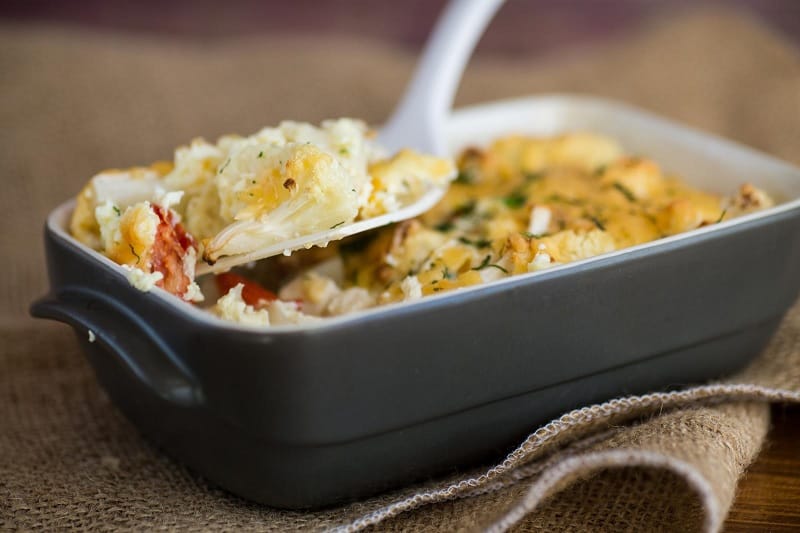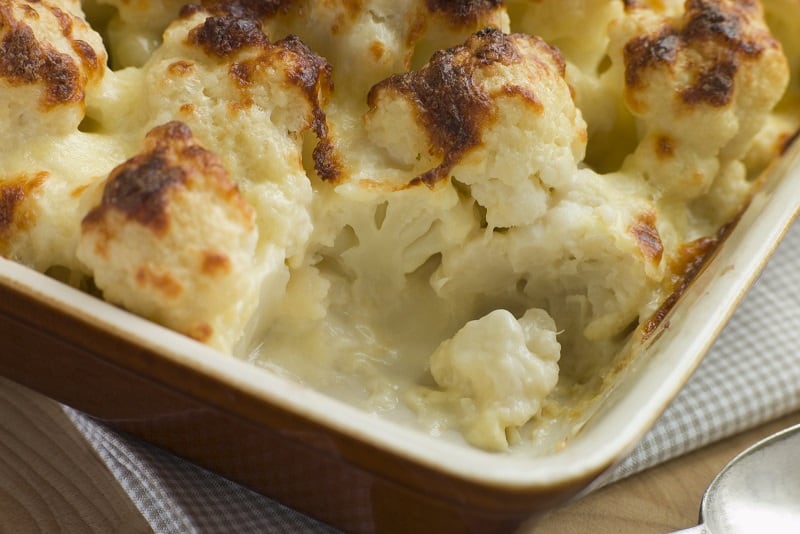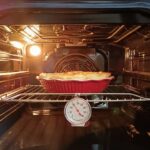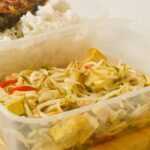Cauliflower cheese is a traditional side dish which takes a classic vegetable and adds a creamy and indulgent twist.
Cauliflower florets are covered with sauce and then baked in the oven for around 20 minutes at 400°F (200°C).
The sauce is typically made from mature cheddar melted into milk and butter with some flour stirred in to thicken the sauce.
Paprika can be sprinkled on the top if preferred to add a touch of spice to cut through the creaminess.
But with all the dairy ingredients, is it possible to reheat any leftovers? Here’s what you need to know.
Can Cooked Cauliflower Cheese Be Reheated?
Yes, it is possible to reheat cauliflower cheese providing you ensure that it’s stored correctly and then reheated sufficiently to eliminate any potential bacteria.
When you reheat cauliflower cheese you should ensure that it’s steaming hot throughout. If you have a food thermometer, check that the internal temperature has reached 75 °C. This is the temperature recommended to ensure that the food is safe to eat.
How Do You Store Leftover Cauliflower Cheese?
If you are expecting to eat the remaining cauliflower cheese within the next 2-3 days, you can store it in the fridge.
For ease you can use the dish that it was cooked in so when it’s time to reheat it, you can put it straight into the oven.
Make sure you cover with silver foil or cling film while it’s in the fridge to keep it as fresh as possible.
If you don’t expect to eat the cauliflower cheese within the next few days it might be better to freeze the leftovers.
Cauliflower will break down a little when frozen and the consistency might be slightly different but it’s still very delicious!
To preserve the quality of your cauliflower cheese it’s a good idea to freeze it as soon as possible. This prevents the cauliflower from absorbing a lot of the sauce and becoming too wet.
Normally cauliflower that’s dripping with sauce is delicious, but in the freezer, it just means that larger ice crystals can form and they are what makes your dish soggy.
Similar to the fridge, it’s a good idea to freeze your cauliflower cheese in a dish that can go straight back in the oven. You’ll need an airtight lid for the freezer but it’s also recommended to double up with a layer of cling film too.
Can You Reheat Cauliflower Cheese Twice?
The Food Standards Agency recommend that all food is only reheated once, and if you’re in a commercial setting that’s all that is allowed.
However, experts agree if you’re cooking at home, it is possible to reheat cauliflower cheese more than once, providing you follow the guidelines regarding temperature.
The more times you reheat food, the greater the risk of contamination so wherever possible it’s good to only cook as much as you need. However, if you have leftovers, reheating food is an excellent way of reducing wastage.
Although you can safely heat cauliflower cheese more than once, you might notice that the cauliflower starts to fall apart.
You may also find that the sauce starts to become watery; this is because dairy doesn’t like being frozen and thawed repeatedly.

How Do I Reheat Cauliflower Cheese?
When you are reheating cauliflower cheese, try not to leave it in the oven for longer than strictly necessary. This will help to prevent it going from too soft or mushy.
The dish should be reheated at the same temperature as it was originally cooked. If it was stored in the fridge, it should only need 10-15 minutes but keep a close eye on the temperature to make sure it’s piping hot throughout.
If the cauliflower cheese was frozen, there’s no need to defrost it before reheating. Warming it from frozen will help to preserve the integrity of the cauliflower and reduce the likelihood of the florets falling apart. Reheating the dish from frozen will normally take around 30 minutes.
It is possible to reheat cauliflower cheese in the microwave but it’s not recommended. The florets are more prone to going mushy and you won’t get the delicious golden-brown crust on top.

Chef’s Pick is your guide to the best kitchen equipment and appliances in the UK.
We help you understand the confusing world of cookers, ovens and cookware so you can get the most out of your kitchen.



